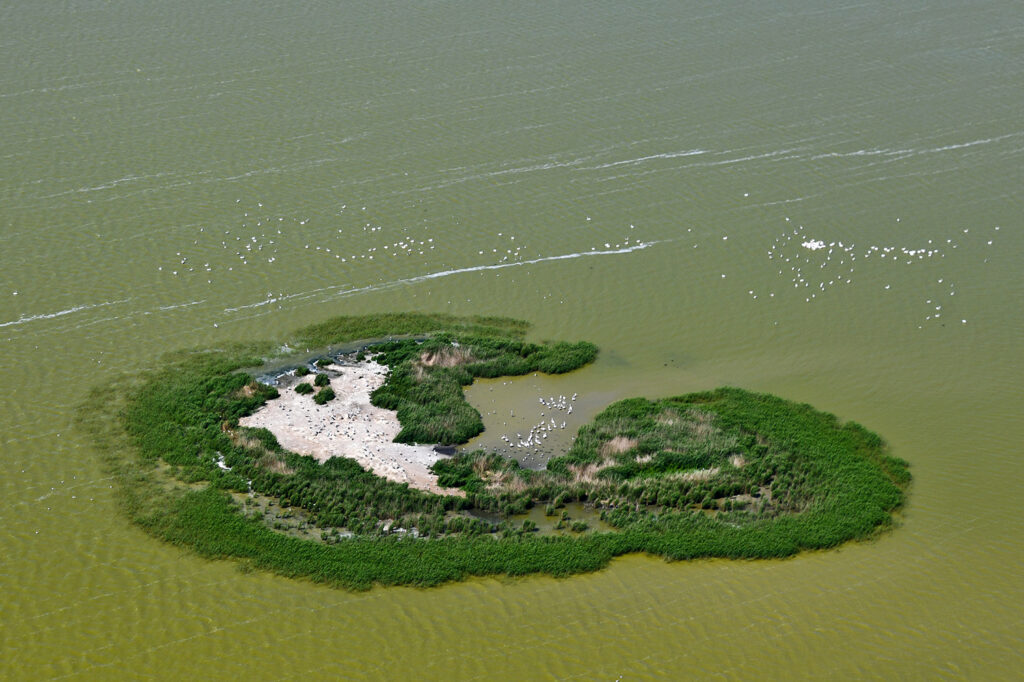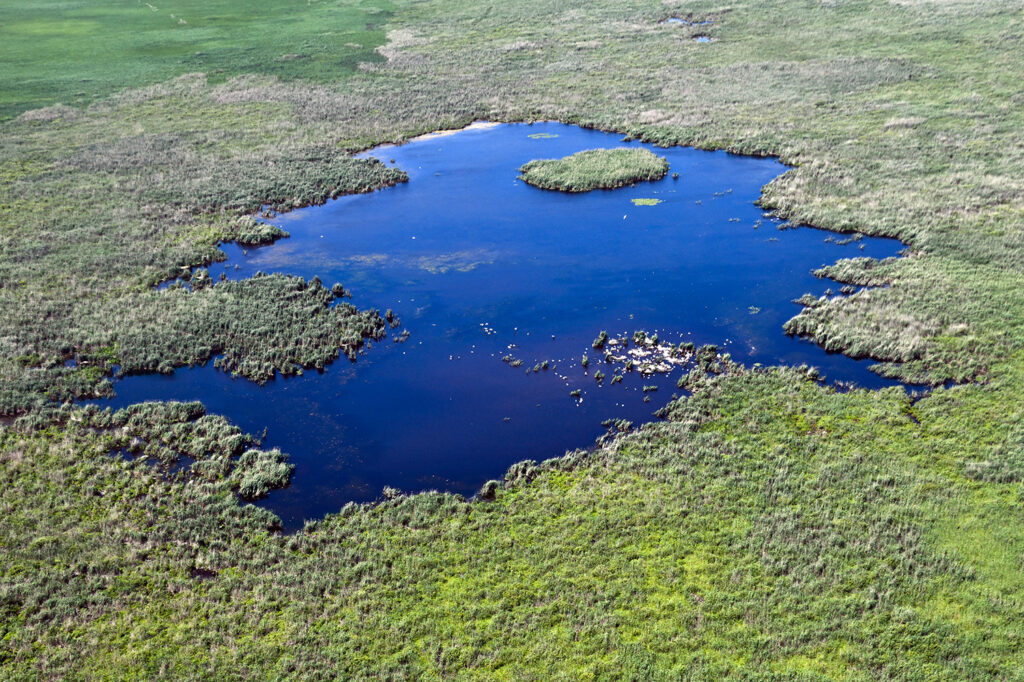The breeding population of the Dalmatian pelicans in Romania has been assessed this year on Lake Tasaul and in the Danube Delta and its lagoon area. Monitoring activities are coordinated by the Romanian Ornithological Society (SOR), which is a partner of the pan-European “Pelican way of LIFE” project.

The long-term monitoring of the breeding population is of paramount importance in order to observe its dynamics and trend as well as potential changes, and also for the implementation of conservation activities.
The monitoring process is based on aerial photography of breeding colonies and subsequent analysis of the photo sets by SOR biologists; based on the results, an estimate of the number of Dalmatian pelican breeding pairs in Romania can be made for the season.

The number of breeding pairs showed a slight increase during this season
Although this was a dry year with low water levels recorded during the season, it was a successful year for Dalmatian pelicans. Based on our evaluations, the total estimate was 446-486 breeding pairs, being one of the highest recorded during the last years. For comparison, during the last 10 years the number of breeding pairs has ranged between 252-432. This year, the highest number of pairs has been noted in the colony at Ceaplace island (172-184), followed by the colony at Lake Lejai (138-150). During years with low water levels, the number of pairs at Ceaplace island is also higher because much of the island surface is not covered by waters and is available for the nesting birds. The numbers at Lake Tasaul have been constant during the past few years, around 15 to 20 breeding pairs.

In addition, the breeding has been also successful, as the total recorded number of fledged juveniles was estimated between 480 and 510 this season.
“Following the monitoring activities that we have been implementing during the last years, the Dalmatian pelican colonies are stable, although multi-annual fluctuations are recorded. If conditions remain favorable, the birds can use the breeding locations for many years, even decades. In the Danube Delta, all 4 colonies where Dalmatian pelicans are known to breed are located on isolated lakes. As a result of this year’s monitoring, we have also recorded a case of mortality in the northern part of the Delta, 8 individuals, but the causes are unknown”, says biologist Sebastian Bugariu, the coordinator of the SOR activities in Romania for the “Pelican Way of LIFE” project.

Satellite tagging of Dalmatian pelicans
In the frame of the “Pelican Way of LIFE” project, SOR is concentrating its activities mainly on monitoring and research, evaluating threats to the pelican population, and implementation of several conservation activities, with the support of DDBRA. As the following steps, a few individuals will be equipped with satellite transmitters in order to follow their movements and juveniles will be tagged using color rings.
The “Pelican Way of LIFE” project is a regional one, and its actions are implemented in several neighboring countries (Greece, Bulgaria, Romania, Ukraine). The actions that will be implemented in these countries are similar, and in addition, artificial platforms for the breeding of pelicans will be constructed in 2 of the countries.
